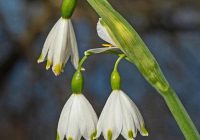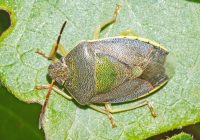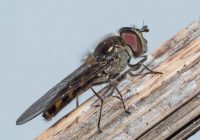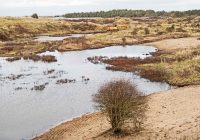Dr Phil Smith’s Wildlife Notes
February 2024
With deep puddles everywhere, it was obvious that the month was much wetter than normal. Rachael Parks recorded 19 rain-days with a total of 129 mm which is nearly twice the February average for Formby. As a result, the sand-dune water-table rose dramatically by almost 20 cm during the month, close to the record level of 2021. The Met. Office tells us that, as well as being wet, it was the warmest February on record in England and Wales. Overall, there is a clear warming trend for average UK winter temperatures, which is likely to continue due to human-induced climate change.
All this warmth had a noticeable effect on the local flora. On 3rd, the first of our spring bulbs, Snowdrops, were out along Range Lane, while by the middle of the month, Blackthorn was in full flower at Woodvale. On 13th, I found Red Dead-nettle and Groundsel flowering on the outskirts of Formby, as well as a range of garden-escapes, including Garden Pansy, Early and Spring Crocus, Daffodil, Forsythia and a white-flowered Prunus. Rather to my surprise, I spotted a Drone Fly and a Marmalade Hoverfly on the Prunus. An unexpected plant here was an attractive white-flowered Leucojum which I thought, at first, could be the uncommon, non-native, Spring Snowflake. However, after correspondence with Mike Wilcox, I decided it must be an early-flowering Summer Snowflake, a single plant of which has graced Wicks Lake for several years. The latter was also in flower this month, though, in past years, I have photographed it as late as April. I was delighted to find the first Colt’s-foot at the Devil’s Hole on 18th. Checking my files, a more typical date for the earliest is 1st March. My first Lesser Celandine on 26th was also early, while Alder catkins were out in force at Sands Lake on 25th. The dunes at Kenilworth Road, Ainsdale, had a scattering of the early annuals, Common Whitlowgrass and Hairy Bittercress, on 22nd. Nearby, was a bush of the evergreen non-native Japanese Spindle with pinkish-red fruits. Fortunately, this shrub shows no sign, as yet, of becoming invasive on the dunes but the same can’t be said of several other plants that are giving rise to increasing concern. They include Traveller’s-joy, which was the subject of a detailed survey last summer. A paper on its distribution and abundance, together with a case for its control and methods for doing so, will shortly be published online in British and Irish Botany.
February is not the best month for finding insects, though I’ve already mentioned two kinds of hoverfly. The south-facing fences along Wicks Path at Formby Point are always worth checking when it’s sunny. A highlight on 10th was a basking Gorse Shieldbug showing its spring colouration. Like several other shieldbugs, this species hibernates as an adult. Later, the same place produced a Spotted Thintail hoverfly, a common species known to fly very late and very early in the season. Its English name comes from an excellent new book on the 400 Northwest Europe hoverflies, giving common names for all of them. Several moths emerge in late winter, one being the Dotted Border that I found on 27th attracted to light at the entrance door to my home. This was a male, the female being wingless, a feature of moths that are active in the colder and windier months.
One of my fortnightly visits to the Devil’s Hole on 18th, coincided with assembly and spawning of a few Common Frogs and Common Toads, the latter mainly males fighting for access to the smaller number of females. Male toads produce a characteristic high-pitched, squeaky call, quite different from the much lower-pitched rumble of the Common Frog.
It’s a bit early for spring migrant song-birds but a wintering Chiffchaff was calling from the island in Sands Lake on 7th. Winter ducks included 20 Gadwall, a decent number, and two male Pochard, now a relatively rare visitor after a widespread European decline. The dunes are invariably quiet in February but Great Tits and Robins were going full-blast at Wicks Lake.
Winter is when most conservation management takes place on the sand-dunes. I was delighted to see two big diggers working to remove scrub, mainly Sea Buckthorn and birch, from big slacks on Ainsdale Sandhills Local Nature Reserve. This is an area that was missed when similar work took place three years ago. Despite extensive flooding, the operators have done a great job, creating large areas of bare sand. This will benefit the specialised duneland plants and insects that need open conditions. It may even help our beleaguered Natterjack Toads.
One of the biggest tides of the year (10.2 m) caused significant coastal erosion at Hightown on 12th. I estimated losses of 3 to 5.5 m along the dune frontage. Towards the northern end, the low dunes protecting the large low-lying reedbed have almost gone. Important for coast protection, these dunes are increasingly vulnerable to climate change and sea-level rise.






